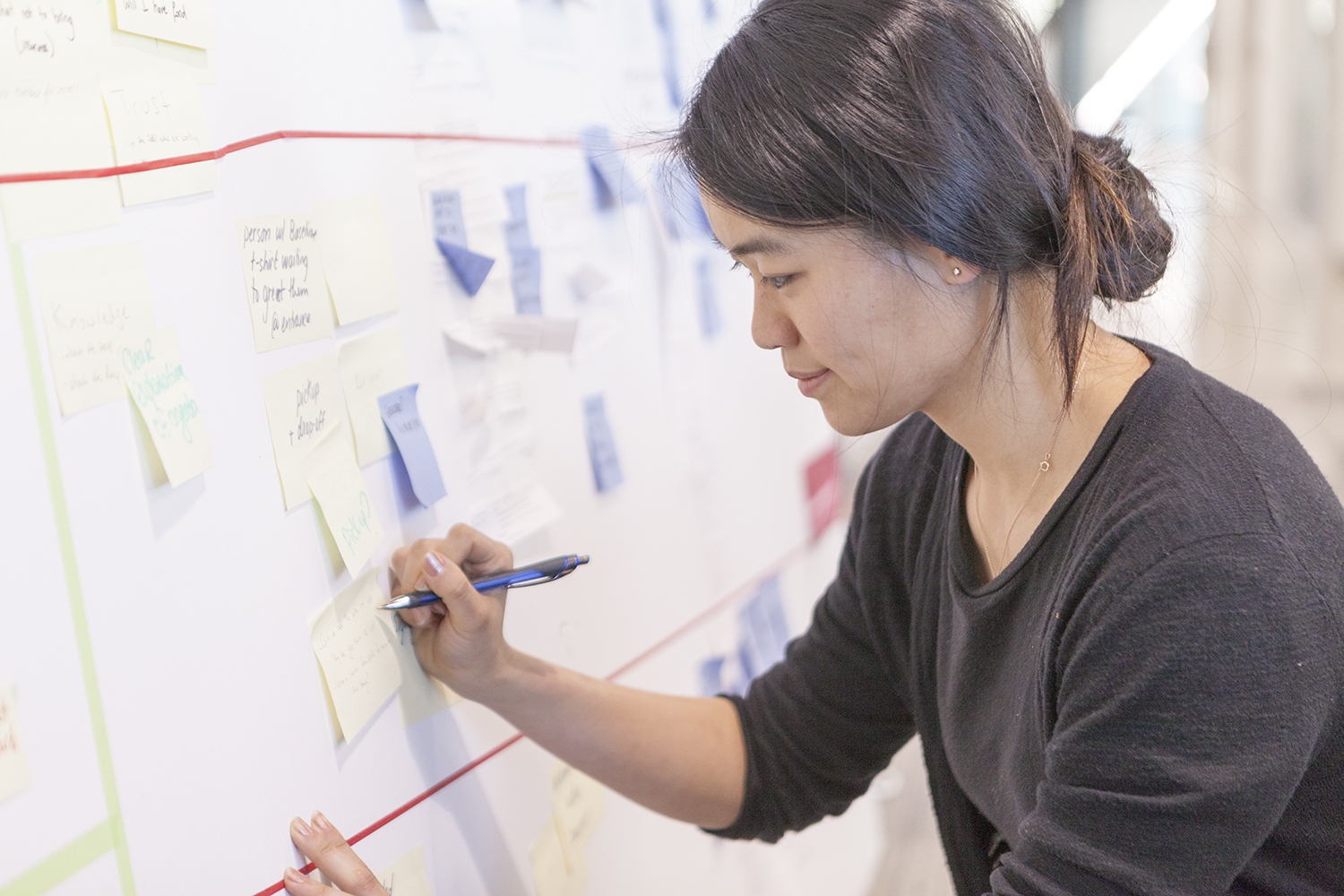Design at the intersection of health and tech
Design at the intersection of health and tech
Delivering great user experiences (UX) for the products and services we create is a guiding principle for our work at Verily. As a company, we start with user needs as we conceive and build our products. The Verily UX team (VUX) collaborates closely with multidisciplinary teams across our organization, dedicated to understanding user needs via user research and delivering designs that address those needs in a safe, effective, and delightful way. This short series of VUX focused blog posts will shed light on the types of user experience work that go on at Verily.

Verily UX team member iterating on designs.
At Verily, we want to craft great user experiences - and for us that means the product provides real value to the user, it is simple to adopt and use, and it positively affects the desired outcome. Focusing on UX is not unique to Verily, particularly in consumer-oriented companies, where many emphasize user-centered design. However, given Verily’s position at the cross-roads of many disciplines, including software development, disease management, medical device development, and clinical research we are, in many ways, in a unique position when it comes to user experience work. We embrace a company value - “question convention” - to identify creative solutions to challenges old and new
UX as a foundational element
Our user experience researchers and designers are part of the core, cross-functional team defining product strategy at the earliest stages of development. Why? Designing great experiences can be surprisingly complex and require design input from the beginning. Technically simple-sounding feature sets can easily result in complicated user experiences if not approached thoughtfully - and if solutions are locked down prematurely without a clear understanding of the underlying user needs, this often necessitates changes in the feature set or implementation later in the development process, which can be costly in terms of both time and money. To avoid this, we work closely with product teams to uncover the user needs before the development work begins, and continue testing ideas with users throughout the development cycle.
Fast - and safe - iteration
Verily operates at the intersection of healthcare and high-tech. Like high-tech companies, such as Google, we emphasize user delight, early experimentation, and fast iteration as the backbones of our user-centered design process. Our expertise in the medical field ensures we do so in a safe and effective way, following the guidelines set by regulatory bodies. Moving quickly and learning from users early and often can be a challenge in a regulated field, but we find creative ways to make it happen.
Building a seamless user experience in a complex ecosystem
Many Verily projects span software, hardware and service design and this can make designing a seamless user experience challenging. Take a hypothetical feature that recommends a medication change to a patient: a well-designed solution could include a connected device to track the medication, a patient-facing system to notify them when they have missed a dose, a physician portal to enable them to monitor the effectiveness of the current medication, and a health coach to help the patient incorporate the new medication routine into their day-to-day life. This complexity requires us to consider the needs of the different user groups, but it is also necessary for us to collaborate with a variety of cross-functional stakeholders with different perceptions of design. Verily often partners with established medical device companies to co-develop our products, meaning we need to work as one team. These complexities are inherent in designing truly usable, successful products that address important medical needs.
What makes UX work at Verily particularly inspiring, challenging and fun stems from the uniqueness of the company. We combine big ideas, big partnerships and big attempts to tackle significant problems impacting global health and we do so in the intersection of two very different worlds - healthcare and high-tech. This unique positioning means that we, as UXers, have to continuously learn and push the boundaries of what is possible in order to design successful user experiences for the exceptional projects we're working on. In the subsequent blog posts in this series, we’ll provide concrete examples of the UX work on a few of the products we’ve launched in the past couple of years.
Posted by Anne Aula, User Experience Lead